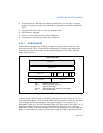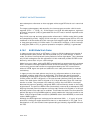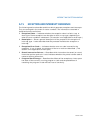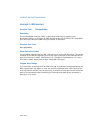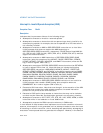
Vol. 3 6-27
INTERRUPT AND EXCEPTION HANDLING
6.15 EXCEPTION AND INTERRUPT REFERENCE
The following sections describe conditions which generate exceptions and interrupts.
They are arranged in the order of vector numbers. The information contained in
these sections are as follows:
• Exception Class — Indicates whether the exception class is a fault, trap, or
abort type. Some exceptions can be either a fault or trap type, depending on
when the error condition is detected. (This section is not applicable to interrupts.)
• Description — Gives a general description of the purpose of the exception or
interrupt type. It also describes how the processor handles the exception or
interrupt.
• Exception Error Code — Indicates whether an error code is saved for the
exception. If one is saved, the contents of the error code are described. (This
section is not applicable to interrupts.)
• Saved Instruction Pointer — Describes which instruction the saved (or return)
instruction pointer points to. It also indicates whether the pointer can be used to
restart a faulting instruction.
• Program State Change — Describes the effects of the exception or interrupt on
the state of the currently running program or task and the possibilities of
restarting the program or task without loss of continuity.







